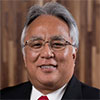High absence levels are not an isolated issue.
When there aren’t enough people on shift, it has a negative impact on everything from team morale to service levels – and can quickly spiral out of control.
So how do you get your absence rates back down? To find out, we asked our consultants panel for the best ways to reduce absence in the contact centre.
Here’s what they said…
10 Tips to Reduce Absence
Here’s some expert advice on how to tackle absence in your contact centre…
1. Stop Disappearing Into Meetings All Day!
Teams that perform highly – and as such see lower levels of absence and attrition – typically have active and engaged leaders.
As a leader, as hard as it can be, it’s important to try and be as present as possible and take an active role in coaching your team – instead of disappearing into meetings all day.
Contributed by: Rob Clarke, Director and Co-Founder of Elev-8 Performance
2. Delegate Tasks and Allow Others to Grow Into Your Position

When employee engagement goes up, absence goes down.
When was the last time you as a leader delegated tasks to someone else? Have you delegated attendance at meetings to another person? Are you allowing your people to grow into your position?
After all, engagement is facilitated by training, opportunities to grow personally and professionally, and value-added assignments that open doors for future success.
Contributed by: Dr M. Dave Salisbury, COO at D&C Consulting LLC
3. Carry Out Return-to-Work Interviews to Get to the Root Cause of Each Absence

Whilst not a legal requirement, one of the most effective ways to reduce absence is by carrying out effective return-to-work interviews – for an all-round better understanding of your agents’ health and wellbeing, as well as helping you to mitigate the root cause of each absence.
Return-to-work interviews shouldn’t be seen as a ‘tick box’ exercise either, but an opportunity to support agents back into the workplace and put in any measure in place that will reduce the likelihood of any further absence.
Here are a few things to think about when carrying out a return-to-work interview:
- Ensure that managers have been trained, that they understand the importance of being understanding and supportive of those returning.
- Welcome back the individual in a positive way and ensure they are well enough to be back.
- Understand how they are, was there anything that contributed to their absence and is there any ongoing treatment that you should be aware of?
- Consider any reasonable adjustments that need to be made to support their return to work, which could include a phased return.
- Ensure that the absence has been recorded correctly.
- Update employees on any changes that have occurred during their absence.
- Clarify any policies or procedures relating to absence and reiterate expectations.
- Be open to any questions that individuals might have or anything that might be worrying them relating to their return.
Contributed by: Gemma Carter-Morris, Director of Wellbeing and Client Relationships at Next Steps Consulting
4. Make Sure Goals Are Within Your Agents’ Control

People come to work and have high levels of intrinsic motivation when they align with and aspire to the purpose of the organization.
If you suspect the opposite is true in your contact centre (and that it could be having a knock-on effect on your absence rates), check that each person has clarity about their role and their performance goals.
Make sure those goals are within their control, or at least within their influence to achieve, have two-way discussions on performance and lead by example.
Contributed by: Michael Clark, Co-Founder and Principal Consultant of CXTT Consulting
5. Get to Know Your Agents Beyond Their Performance Figures

Whatever the size of your contact centre, there will never be a substitute for the human connection when it comes to reducing absenteeism and even turnover.
This starts with the supervisors and managers who are directly working with agents. They should be checking in at least weekly with each person they manage, not just to manage performance, but to get to know them as human beings.
This transforms your contact centre into a community where agents are treated as humans instead of numbers… And they are much more likely to show up to that sort of work environment!
Contributed by: Jeremy Watkin, Director of Customer Experience and Support at NumberBarn
6. Upskill Your Team on How to Spot Mental Health Issues

Contact centres are notorious for being challenging, so a focus on wellbeing is key.
One way to do this is to upskill your team to understand what mental health challenges are and what they look like, as this will collectively give you a greater chance to spot anyone needing additional support – particularly when somebody who is absent doesn’t signpost that they have a mental health issue.
Contributed by: Rob Clarke, Director and Co-Founder of Elev-8 Performance
7. Schedule Semi-Annual Growth Interviews

Create semi-annual growth interviews. Why? Quarterly interviews would be too soon, and annual interviews would be too long a wait.
When leaders listen intently, respond empathetically, and act promptly to take appropriate corrective action to help their agents grow, their feel empowered to develop themselves and engage others.
With each interview, and subsequent leadership actions and results, the people envision their own and their company’s growth – and this has a positive impact on absence rates and attrition.
Contributed by: Bill Quiseng, Chief Experience Officer at billquiseng.com
8. Build Meaning and Purpose Behind What Your Agents Do

Let’s face it, most contact centre roles are seen as entry-level jobs and not careers.
For that simple reason we are often guilty of looking at the role that way from inside a contact centre too.
A different approach will have a more positive effect on agents and reduce
absenteeism.
One way to overcome this is to build meaning and purpose behind what your agents do.
Now, it’s not that simple: a doctor’s purpose is to save lives, a chef’s to prepare food; a
contact centre agent’s purpose is not that tangible, but is still very important.
You can build this meaning two ways:
- Encourage agents to use and abuse the time they have in a contact centre! Whether it’s 2 months or 20 years, encourage them to own their personal development, put themselves in uncomfortable situations and get comfortable with them – and always remind them that the skills they learn within a contact centre will serve them well for the rest of their life.
- Share your agents’ purpose within the business. Agents need to feel their contributions matter and that they are part of something bigger than themselves. For example, if your organization sells holidays, remind your agents that they play an incredibly important role in the experiences those families and customers will have.
If we feel part of something and we feel that what we do is meaningful and matters to
others, we will find more satisfaction in doing what we do and look forward to it too,
reducing absenteeism.
Contributed by: Clayton Drotsky, Director of Growth Crew Ltd
9. Look for Opportunities to Reduce Friction (and Frustration) in Your Processes
Do your processes empower your agents to help customers, or do they have to escalate simple questions because the processes demand it?
People want technology solutions that make their jobs easier, not harder. Do you provide easy-to-navigate systems, CRM and knowledge management capabilities that help your employees to be more efficient and effective?
If not, why not? These areas of friction can cause harm to the health and wellbeing of your agents.
As a leader, you can demonstrate you care by asking questions, even if you don’t like the answers, and by openly calling out and tackling these challenges. The roadmap to reducing absence starts with you!
Contributed by: Michael Clark, Co-Founder and Principal Consultant of CXTT Consulting
10. Make Sure All Agent Feedback Is Personal and Specific

When people are engaged, absenteeism is reduced by up to 78%.[1] This indicates that much of the absence within contact centres can be influenced, if you can just figure out how best to engage your agents.
A simple model for engagement is that it’s where passion and purpose meet.
Passion is considering questions like “Do I enjoy what I do?”; “Do people know and see me?”; “Can I be myself?”
Purpose is considering “Does what I do make a difference?”; “Can I disagree or offer suggestions safely?”; “Do people recognize what I bring to the table?”
If we keep these questions in mind, we can start to look at small, simple and low-cost steps in areas such as our development, communications or recognition approaches.
For example, gift vouchers might imply that we don’t “know” who we’re recognizing. We sacrifice engagement for convenience. It’s easier to give them a generic voucher.
How differently would the recognition be perceived if that feedback were personal and specific to the individual? If it said, “I see you and I appreciate the unique value you bring”?
1 Gallup State of the Workforce Report 2024
Contributed by: Danny Wareham, Founder & Director of Firgun
Absenteeism Should Not Be a Stick to Beat People With
Last, but not least, as Dave Salisbury concludes, “Absenteeism should not be the end of a conversation, or a stick to beat people with, but should be the start of ways and means to build trust, show trust, and cement relationships!”
If you are looking for more great information on managing employee absence, read these articles next:
- How to Calculate Absenteeism – Including the Formula
- 29 Strategies to Tackle Agent Absence and Attrition
- The Bradford Factor – Improving Contact Centre Absenteeism
Author: Megan Jones
Reviewed by: Xander Freeman
Published On: 14th Aug 2024 - Last modified: 21st Nov 2024
Read more about - Call Centre Management, Absenteeism, Bill Quiseng, Clayton Drotsky, Danny Wareham, Dave Salisbury, Editor's Picks, Gemma Carter-Morris, Jeremy Watkin, Michael Clark, Rob Clarke, Staffing, Team Management, Top Story




































